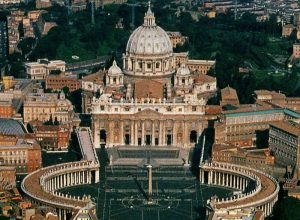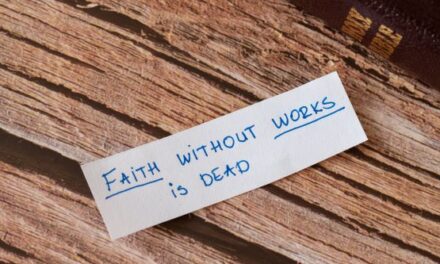 Lana’s Lines
Lana’s Lines
Fundraising
By Lana Ellis
Kingsport, Tennessee
According to the Oxford Dictionary the meaning of the word “Fundraising” is the seeking of financial support for a charity, cause or other enterprise. One source said that the term “fundraising” was first used in 1869 but actually raising funds for a particular cause existed long before then. We know for sure it was practiced in the Old Testament. A noted example is found in Exodus 35. The Lord instructed Moses to have the people who “were of a willing heart” to contribute items for the construction of the Tabernacle. More than enough gold, silver, bronze, fine fabrics, animal skins, oil and precious stones were given. The “Tabernacle Building Fund” was a huge success!
Today with most fundraisers those contributing to the cause receive something in exchange. It might be cookies sold at the store entrance or magazines, popcorn and candy being offered at your door by neighbor kids. Pancake breakfasts, spaghetti suppers or fish fries are often used as fundraisers for service clubs. Church youth groups raising money for a mission trip are well known for their car washes!?! (If they’re willing to take a week out of their summer break to repair a house or conduct a backyard Bible club I’ll gladly contribute in spite of the smudges!)
What if contributing to a fundraiser would assure you that at your death you would go to heaven?  Would you “buy” into it? The Catholic Church teaches that the souls of those who are deceased are kept in “purgatory”. Purgatory is defined by The Catechism of the Catholic Church as a “purification so as to achieve the holiness necessary to enter the joy of heaven.” Members of the church are given the opportunity to reduce the amount of punishment for sins and lessen the time spent in purgatory by way of “indulgences”. Indulgences are earned by performing good deeds and quoting certain prayers. In the 1500’s plans were in place to build the new St. Peter’s Basilica, the most predominate building that stands even today in Vatican City. Knowing that it would take a lot of money to construct such an elaborate building it became necessary to raise funds. “Ah ha!” said the Power That Was, when the lightbulb lit up over his head. Rather than by just good deeds and prayers, what if one could “buy” indulgences? The idea became a reality and the practice of indulgences being granted in exchange for money became the “Basilica Church Building Fund”. “Want to get to heaven faster? Toss you gold coins into the pot.”
Would you “buy” into it? The Catholic Church teaches that the souls of those who are deceased are kept in “purgatory”. Purgatory is defined by The Catechism of the Catholic Church as a “purification so as to achieve the holiness necessary to enter the joy of heaven.” Members of the church are given the opportunity to reduce the amount of punishment for sins and lessen the time spent in purgatory by way of “indulgences”. Indulgences are earned by performing good deeds and quoting certain prayers. In the 1500’s plans were in place to build the new St. Peter’s Basilica, the most predominate building that stands even today in Vatican City. Knowing that it would take a lot of money to construct such an elaborate building it became necessary to raise funds. “Ah ha!” said the Power That Was, when the lightbulb lit up over his head. Rather than by just good deeds and prayers, what if one could “buy” indulgences? The idea became a reality and the practice of indulgences being granted in exchange for money became the “Basilica Church Building Fund”. “Want to get to heaven faster? Toss you gold coins into the pot.”
To speed up the collection of funds Johannes Tetzel was hired by Archbishop Albert with Pope Leo X’s approval. Tetzel could have easily earned the title “Fundraiser of the Decade”. Standing at pulpits throughout the land he would give the following “sales pitch”:
“Indulgences are the most precious and sublime of God’s gifts … Draw, near, and I will give you letters duly sealed by which even the sins which you shall hereafter desire to commit shall all be forgiven … There is no sin so great that indulgences cannot remit. Ye priests, ye nobles, ye wives, ye maidens and you young men, hearken to your departed parents and friends who cry to you from the bottomless depths. ‘We are enduring a horrible torment’, they scream, ‘a small alms from you would deliver us. You can give it now if you will’.”
The saying “As soon as the coin in the coffer rings, a soul from purgatory springs” is attributed to Tetzel. At one of his “fundraising events” it is said that a man asked Tetzel if it were “really” possible to receive a letter of indulgence for a “future sin.” Tetzel, eager to make a sale, answered with a resounding, “Yes”. The man handed over his money to Tetzel and Tetzel added it to his bag with all the other collections. As Tetzel was leaving town he was attacked by the aforementioned man and rob of all the collected money. The man told Tetzel that this attack and robbery was the “future sin” he had in mind!
About the same time Frederick the Wise, Elector of Saxony (Germany), had an ongoing fundraising event for “The University of Wittenberg Building Fund”. It was in the Castle Church of Wittenberg that Frederick displayed his prized collection of over 19,000 “authentic” relics. People came from everywhere for the opportunity to walk through the exhibition. Upon purchasing their tickets they got to feast their eyes on things like “a twig from the burning bush, soot from the fiery furnace, hay from the manger, fragments from Jesus’ crib, milk from Mary, a thumb from St. Anne (Mary’s mother), bread from the Last Supper, a thorn from the crown Jesus wore and fragments of bones, teeth, and hairs from various saints”. Not only did a purchased ticket give opportunity to enter the museum of “authentic” relics it also included indulgences. I imagine that as people exited the building they were handed a “letter of indulgence.”
Ironically a former Wittenberg University student, a Catholic monk named Martin Luther, began questioning the sale of indulgences. It was on the massive wooden door of Frederick’s Castle Church that Luther posted his Ninety-five Theses in opposition to the non-biblical “fund raising” practice of granting indulgences. This act was the beginning of the Protestant Reformation restoring the original teachings of Jesus and the apostles, who made no references to the granting, much less selling, of indulgences. The granting of indulgences is still practiced by the Catholic Church by reciting the prayer or act of charity assigned. Receiving indulgences in exchange for money, however, came to an end shortly after Luther took a stand against it. Well, so much for that fund raiser!


 Lana’s Lines
Lana’s Lines




